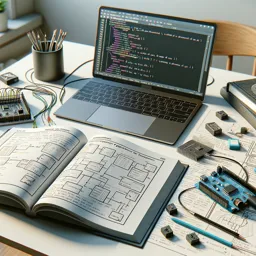Introduction to Tkinter
Tkinter is the standard GUI (Graphical User Interface) library for Python, allowing developers to create desktop applications with windows, menus, buttons, and more. Thanks to its integration with Python, Tkinter is widely used for quick prototyping and small-scale applications that require user interaction in a graphical environment.
What Makes Tkinter Attractive?
- Easy to Learn: Tkinter is user-friendly for Python developers, with straightforward syntax and helpful documentation.
- Standard Library: Tkinter comes bundled with most Python distributions, making it one of the most accessible ways to create GUI apps in Python.
- Cross-Platform: Applications built with Tkinter can run on Windows, macOS, and Linux without significant changes.
- Supportive Community: Tkinter has a large user base, making it easy to find examples, tutorials, and solutions for common problems.
Key Components of Tkinter Applications
Tkinter applications are formed by combining different widgets (controls), such as:
- Windows: The primary container for your application.
- Buttons: Trigger actions when clicked.
- Labels: Display text or images.
- Entry Fields: For user input, such as text boxes.
- Menus: Create drop-down navigation lists.
- Frames: Organize widget layouts.
Sample Tkinter Application
Here’s a very basic example of a Tkinter application in Python:
import tkinter as tk
root = tk.Tk()
root.title("Simple Tkinter App")
label = tk.Label(root, text="Hello, Tkinter!")
label.pack(padx=20, pady=20)
button = tk.Button(root, text="Close", command=root.quit)
button.pack(padx=10, pady=10)
root.mainloop()In this example, a window opens with a label and a button. Clicking the button closes the application.
Best Practices
- Keep the UI simple: Use clear labels and a straightforward layout.
- Structure your code: Separate logic and UI components for easier maintenance.
- Use frames: For complex layouts, use frames to organize widgets.
- Add error handling: Make sure the app handles exceptions and invalid inputs gracefully.
When to Use Tkinter?
Tkinter is excellent for small desktop tools, quick prototypes, and educational purposes. For larger or more visually demanding applications, other frameworks such as PyQt or Kivy might be more suitable.
Conclusion
Tkinter empowers Python developers to build desktop applications with ease. If you’re looking to add a graphical front-end to your Python project, Tkinter is a great first step into the world of GUI programming.

































